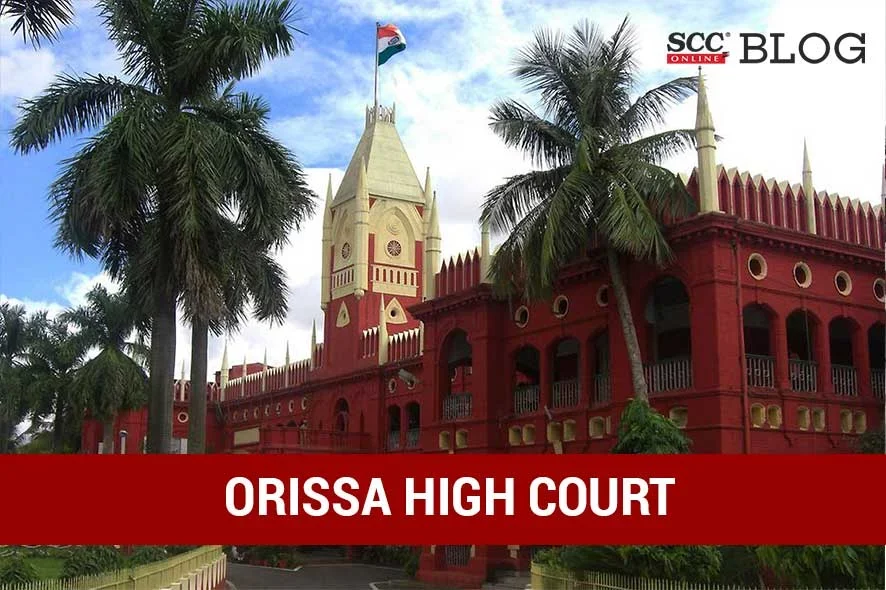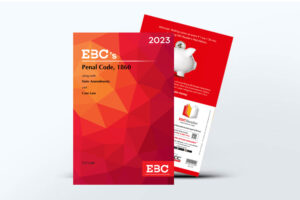Orissa High Court: In an appeal against the Trial Court’s order, whereby, the appellant/ convict was convicted for offences under Section 458 read with Section 302 of the Penal Code, 1860 (‘IPC’) and sentenced to life imprisonment, the Division Bench of G. Satapathy* and D. Dash, JJ. allowed the appeal and set aside the impugned judgment.
Factual Matrix
In the matter at hand, the convict regularly assaulted his wife under the influence of liquor. On 15-07-2013, the convict’s wife left the house after a quarrel, but in the evening when she found her house locked, she went to the neighbour’s (deceased) house. In the night, the convict reached the deceased’s house and there was a quarrel between the two. The convict dealt a blow on his wife’s head with a beer bottle causing injury on her head and the wife left the deceased’s house. Later, the deceased was found dead. The landlord lodged a First Information Report (‘FIR’) against the convict on 16-07-2023. A chargesheet was filed against the convict for offences punishable under Section 302 read with Section 460 and 307 of the IPC. On prima facie material and evidence, the Trial Court framed charges for commission of offences punishable under Section 458 read with Section 302 of the IPC.
Analysis and Decision
The Court noted that the conviction was based on two circumstances, firstly, the last seen theory and secondly, the recovery of weapon i.e., a stone. Regarding the question of nature of death, the Court noted that the doctor had stated haemorrhage and shock due to injury to the brain and multiple bleeding injuries on abdomen and other parts of the body, as the cause of death of the deceased. The Court also noted that it was stated in the post-mortem report that the injuries were fatal and sufficient to cause death in ordinary course of nature. Therefore, the Court said that there was no doubt regarding the establishment of the homicidal death of the deceased beyond all reasonable doubts.
Further, the Court noted that direct evidence as to the occurrence was absent, however, the Court said that the guilt of the offender can always be established through circumstantial evidence. Regarding the last seen theory relying upon appellant’s wife and son testimony, the Court said that the wife’s evidence did not transpire that the deceased was last seen with the convict. The Court noted that the wife had stated in her evidence that when the convict started to fight the deceased, the deceased out of anger dealt two blows upon convict by means of an iron rod and the convict dealt a blow on her head with a beer bottle and out of pain, she came outside the house and informed the police on duty at Atharanala about the incident. Thereafter, when the police reached at the spot, the deceased was lying in his room with deep cut injury on his neck and other injuries on different parts of his body and the convict was not present there. The Court noted that the son had also given a similar testimony.
The Court noted that the investigating officer had received FIR on 16-07-2013 at about 1 PM, but he received a phone call about murder of the deceased at about 9 AM and sent Assistant sub-inspector of police to verify the information, but he did not make any entry in the station diary about the phone call and after registering the case, he went to the spot. Hence, the Court said that the police had reached to the spot after registering the case at 1 PM in the afternoon and it is also the specific evidence of the convict’s wife and son that after the police arrived, they came along with them to the deceased’s house and found him lying dead. Therefore, the Court said that it was very clear that since mid-night till the FIR was lodged at 1 PM, which is more than twelve hours, the police had not reached to the spot.
Thus, the Court rejected the wife and son’s evidence and said that the wife was not revealing the true genesis of the case, rather she deposed selectively by withholding some facts which might incriminate her. The Court also added that neither the convict’s wife nor his son had seen the convict assaulting the deceased in any manner and their evidence only demonstrates that there was a quarrel between the deceased and the convict, but what happened to the deceased from mid night till his dead body was found in his bed room in the morning was not stated.
The Court perused Section 106 of the Evidence Act, 1872 (‘the Act’) and said that doctrine of last seen theory emanates from Section 106 and is an exception to the burden of proof under Section 101 of the Act. However, the Court said that the initial burden of proof never shifts by invoking the provision of Section 106 of the Act, unless the prosecution establishes the foundational facts by clear, cogent and acceptable evidence. The Court explained that Section 106 of the Act never relieves the prosecution from establishing prima facie guilt of the accused beyond all reasonable doubt. It is only when the same is established, the burden would shift to the accused to explain the facts which are within his personal knowledge and in case, he fails to explain or establish those facts, an adverse inference can obviously be drawn against the accused.
Therefore, the Court said that it cannot be concluded that the deceased was only last seen together with the convict, to invoke the provision of Section 106 of the Act against the convict to offer explanation for the death of the deceased. The Court also said that there was no evidence as to what the convict’s wife was doing even after sustaining injury on her head, from mid night till she was sent for medical examination by the IO at 3:45 PM on 16-07-2013, hence, creating a genuine doubt with the prosecution’s case. The Court concluded that the prosecution did not establish the foundational facts to press the service of Section 106 of the Act against the convict to explain about the death of the deceased.
Regarding the weapon, the Court said that evidence was absent as to how the weapon, i.e., stone was recovered and the place of recovery stated by the investigating officer did not tally with the place of recovery stated by the convict in the disclosure statement which was a bush on the ridge of a tank as per the prosecution case.
The Court allowed the appeal and acquitted the convict of the charges. The impugned judgment was set aside.
[Ashok Nayak v. State of Odisha, 2024 SCC OnLine Ori 456, Decided on: 22-01-2024]
Judgment Authored by: Justice G. Satapathy
Advocates who appeared in this case:
For the appellant: Advocate B.C. Ghadei
For the respondent: ASC G.N. Rout








